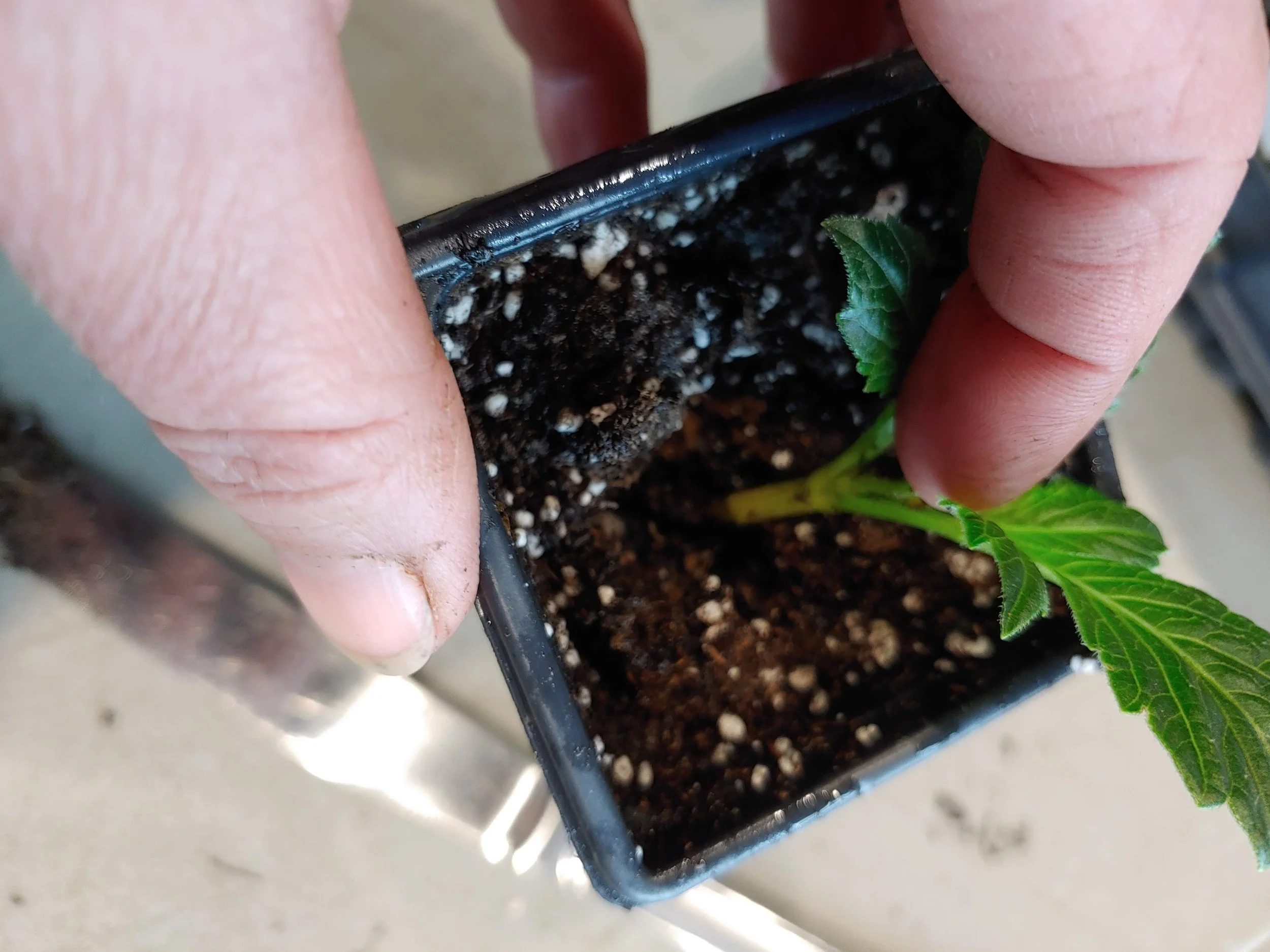It’s time- or it soon will be for most of us to plant our dahlias. We’ve begun the process on our farm this week. Basic planting is a fairly straight forward process but like with all things dahlias- there is always more than one way to do it.
Basic Planting Instructions: (If you’ve planted a dahlia before, skip this part)
Prepare your soil- amend according to soil test instructions. Then add a granular fertilizer with a slightly higher percentage of nitrogen than phosphorus and potassium. If you didn’t soil test, then 1.- Go do it and 2.- You can still go ahead and plant, just add the fertilizer and then add your amendments once you get the test back. It’s easier to add the amendments before planting though so — Get The Soil Test first!
After soil prep, dig a shallow hole. How deep? Depends on your soil type and climate. If you have sandy well draining soil and live where there is moderate rainfall, then 5-6” deep is great. If you have heavy clay soil and you’re still working on your drainage, then plant a generous 1.5” under the soil. This also works if you live in a heavy rainfall climate.
You can lay the tuber on it’s side or place the crown pointing up. But you may not know which end has the crown if you are new to this, so just place the tuber horizontally. The sprout will find it’s way up.
Don’t water immediately after planting. The tuber has enough moisture to get your sprout started and you’ll also get some rain anyways. Extra water is just going to contribute to rotting. If you go 3+ weeks with no rain, then give it a good soak but don’t water again until you see it sprout.
After it’s sprouted 4-5”, then you can water normally- make sure your dahlias get adequate water- not sopping wet but soil shouldn’t get bone dry and cracked between waterings.
Planting- All the Little Bits You’ve Wondered About:
This next section is just a collection of thoughts and answers to questions I see often.
1. I’m planting tubers in a hoop house- when do I begin watering? I plant my tubers inside the hoop, then take a sprinkler and soak the whole house really good once. Then I don’t turn irrigation on until the tubers begin sprouting. I usually wait until about 40-50% of the house has sprouted. You have to simulate rain inside the house to get them going.
2. My tuber has a 3-4” sprout on it, how do I plant it? Just like the instructions above. If you bury the sprout, that’s fine. It will keep growing. Just plant at the depth recommended for your soil type.
3. I took cuttings off my tubers, can I plant these? Yes- you can still plant tubers you have taken cuttings off of. I like to let my tuber re-sprout before I plant it. It’s just a little extra insurance- I don’t think this is completely necessary, just how I do it. I will cut off some of the sprouts if it resprouts multiples- I don’t leave more than 3. I also make sure these tubers get adequate fertilizer. You’ve taken cuttings off the tuber - which means you’ve removed it’s method for making more food to store up in the tuber. So these get a little extra nutrition at the beginning. Some people don’t plant a tuber they’ve taken a lot of cuttings off of- they feel it’s exhausted. But I think, if it’s still producing sprouts- then give it some good food and it will replenish itself in time. Just another example of how there’s always more than one way to do something with dahlias- This is why they are so much fun!
Re-sprouted pot tuber after a cutting has been taken
4. The sprout fell off my tuber in shipping- what do I do? Plant it. It will re-sprout. You can wait on it to re-sprout before you plant it or just put it in the ground. Either way is going to be fine- it just wants to grow.
5. My tuber shriveled in storage but I see it beginning to sprout. So- you can just put it in the ground or you can pot it up. I potted up some tubers like this awhile back. They got a little too shriveled for my taste in storage and I wanted to make sure I was going to get a good plant. So I basically turned them into dahlia plugs. Out of 100 tubers, only a small handful (less than 10) didn’t sprout and gave me a great plant. Mostly I like to just plant and not fuss but sometimes a little babying pays off!
Tubers that were shriveled or unsure if they had an eye got potted up into a 50 cell plug tray to create “dahlia plugs”
6. I received a clump of tubers in the mail, can I plant the whole thing? Yes- you can plant the whole thing- at the depth recommended for your soil type (see above). You don’t have to divide, you can if you want but it’s not necessary.
7. The clump of tubers I received has a sprout/eye on the stem. How do I plant it? If the sprout is lower on the stem near where it intersects with the tubers, then plant so that the sprout/eye is under the soil. If it’s really high- several inches up, chop the stem at the base where it intersects with the tubers and then plant the whole clump. Some varieties will eye off an old stem (looking at you Cafe Au Lait!). You don’t see this a lot but it’s not abnormal.
Got any planting questions, drop me a line here and let me know!





























